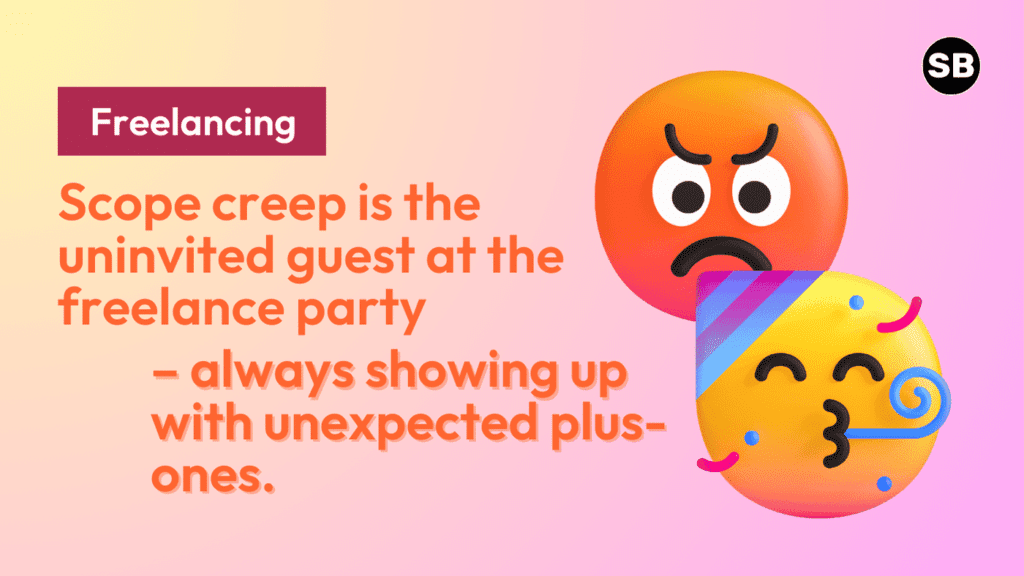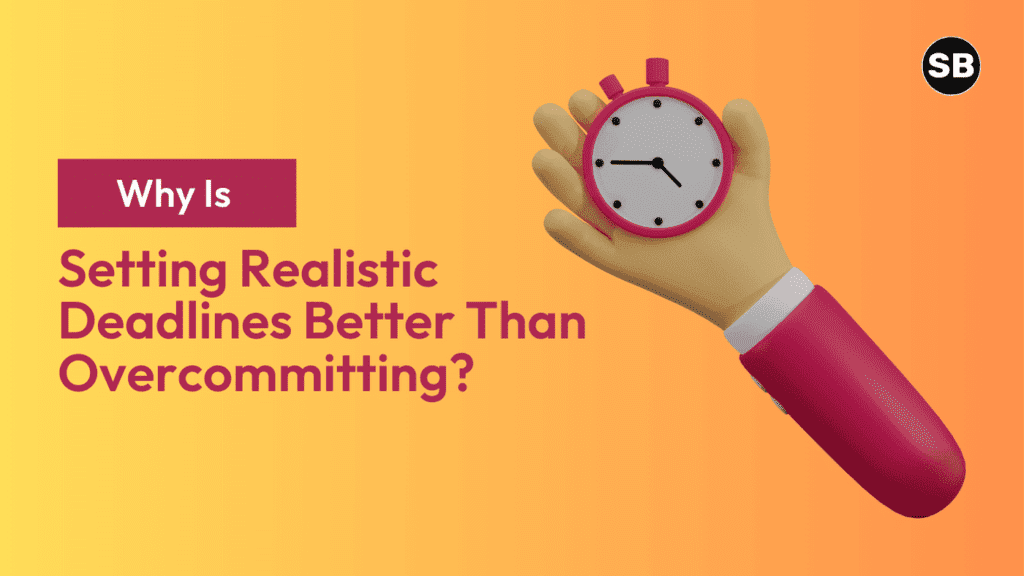As an experienced freelancer, I completely understand the challenge of managing multiple clients and sticking to various deadlines. It’s like juggling fire while walking a tightrope. It can be nerve-wracking but trust me, with time, you can master this delicate art form. In this article, we will delve into my favorite strategies that have helped me keep (almost) everything under control without compromising the quality of my work.
Table of Contents
Here, I’ll share my tips on how these strategies work in real life, and how you can master them to ensure you’re delivering top-quality work to every single client, irrespective of how busy your schedule is.

1. Understanding Your Limits: Setting Realistic Client Expectations
Understanding your limits isn’t about admitting defeat. Rather, it is about assessing your capabilities realistically and setting boundaries that protect your well-being and maintain the quality of your work.
The most effective way to manage this balancing act is to set realistic client expectations right from the outset. Here are some strategies that I’ve found to be particularly helpful:
- Communicate your working hours clearly. Inform your client when you are available for calls or correspondence and when you need uninterrupted work time.
- If a deadline is impossible to meet without compromising on work quality, let your client know. They would rather hear an honest “no” than receive subpar work.
- Explain the time and resources required for each stage of a project. Clients appreciate transparency and will respect the fact that quality work takes time.
- Respect your boundaries. Just because a client requests a rush job doesn’t mean you have to take it on, especially if it’s going to affect your work quality with other clients.
Being honest and clear with your clients about what you can and cannot do will help you avoid overextending yourself, maintain your work quality, and keep your relationships with clients positive and healthy.
Clients will appreciate your honesty and value your commitment to delivering quality work, even if it means occasionally having to say, “I can’t do that in the timeframe you’re asking for.”
2. Prioritizing Your Clients: Identifying High-Value Projects
When everything looks essential, knowing which project to tackle first might feel like deciphering an enigma. But how does one effectively prioritize? Let me share a personal approach that helps me keep my sanity while managing my eclectic list of clients.
1. List Your Clients and Their Projects: Start with a detailed list of your projects including client names, project scopes, deadlines, and fees. I used to struggle with tracking multiple projects across different apps until maintained one comprehensive list.
2. Rank Each Project: Assign a rank to each project based on urgency and importance, considering factors like deadlines, pay, and enjoyment. From personal experience, I’ve found it beneficial to prioritize projects that offer more rewards while consuming less of my time.
3. Prioritize Based On Rank: Using the ranks, prioritize the projects – those with higher urgency and significance move to the top of the list.
In conclusion, why is prioritizing important? Because it ensures you focus on the right thing at the right time, helping you to maximize your freelancing profits without compromising on work-life balance.
3. Creating a Master Schedule: Organizing Your Time Effectively
Create an overview of your current and upcoming projects, including their deadlines, for a clear view of your tasks. You can use tools like Google Calendar, Asana, or even pen and paper. Break down each project into tasks and set realistic timeframes for each to ensure high-quality work and prevent over-commitment.
Time management isn’t about squeezing as many tasks into your day as possible. It’s about simplifying how you work, getting tasks done faster, and doing tasks when you’re more mentally prepared for them.
Pro Tip: Keeping buffer time in your schedule for unforeseen changes and tasks that take longer than expected can be a lifesaver!
Once you’ve allocated time slots to every task, respect your schedule. Exceptions are inevitable, but routinely overrunning your allotted time slots usually points towards the need for better estimation or better focus during the task.
It’s important to note that a master schedule is a dynamic tool. Check in every week to see how you’re performing against your schedule and make adjustments as necessary. Over time, you’ll get better at estimating how much time you need for different types of tasks, and your schedule will become more accurate and reliable.
The goal of a master schedule is not to confine you but to give you control over your freelance work life. It helps in organizing your tasks, managing your work-life balance, and maintaining a steady workflow. Remember, turning chaos into order is one key to succeeding as a freelancer!

4. Handling Scope Creep: Communicating Changes and Managing Client Demands
In freelancing, ‘scope creep’ refers to clients changing project parameters after work begins. While flexibility can be beneficial, managing client expectations is crucial. Here are strategies to handle scope creep effectively.
Freelancers spend an average of 36% of their time on non-billable tasks
clockify.me
Clarify expectations from the outset: From my personal experience, I’ve found that clear communication is key to preventing scope creep. Before you start working on a project, ensure your client understands what they are getting for their money and what would constitute additional work that needs to be recompensed.
Always draft a project scope document and get it approved by the client, clearly describing the deliverables, timelines, costs, and what is not included in the project scope.
Learn to say ‘no’: This is a critical step in handling scope creep. From experience, trying to please each client with every extra request is untenable. To prevent overloading yourself, learn to decline requests exceeding the project’s original scope, particularly unpaid tasks.
Address scope creep promptly: Whenever changes or additions are requested that you believe constitute scope creep, address them immediately. Don’t let them pile up, and make sure your client understands why certain tasks constitute additional work.
Consider the relationship: Consider the client relationship before taking on extra work. If a long-term client makes a minor request, it might be worth doing it for free. However, if this becomes the norm, discussing scope and rate adjustments may be required.
5. The Power of Delegation: Outsourcing and Collaborating
While freelancing offers great opportunities, we’re human and can sometimes overcommit. Taking on too much risks compromising work quality and can lead to burnout. One strategy to remain efficient, which I’ve found successful, is delegation.
Learning to delegate tasks can be a game-changer when managing several clients simultaneously. It’s understanding that you don’t have to do everything yourself. In my early freelance days, I was reluctant to delegate, assuming it would lessen my control over the work resulting in compromised quality— yet, the opposite was true.
I have a team of trusted fellow freelancers (friends) who I can rely on when I need a particular skill or the is an overload of work.
Creating such collaborations and fostering relationships with other freelancers not only helps manage your workload but can also turn into a mutual learning experience, enriching your work and expanding your network. Here are some pointers to consider:
- Identify tasks to delegate: If something is not your forte or takes too much time, decide to delegate it.
- Select the right professional: Collaborate with freelancers who have expertise in the area you lack. It ensures the quality of work, and their unique perspective might also bring new insights.
- Communication is key: Clearly define the tasks, deadlines, and expectations of the freelancer you’re collaborating with to avoid any confusion or misunderstanding.
- Feedback loop: Provide and receive feedback regularly. It not only ensures better results but also helps establish a healthy relationship with the collaborator.
Trust in the power of delegation and collaboration, you don’t have to bear the entire load single-handedly. The freelance world thrives on individual skill sets coming together.
6. Streamlining Your Workflow: Utilizing Project Management Tools
As a freelancer handling various clients, leveraging project management tools can be highly beneficial. They help you monitor ongoing projects, manage time effectively, and prevent any tasks from being overlooked.
They offer features such as task tracking, time-tracking, file sharing, collaborative workspaces, and much more. Here are a few strategies to leverage these tools effectively:
- Use it as a central hub: Keep all your project information, notes, and files in one place. This will help you avoid wasting time searching for information and ensure that you have everything you need at your fingertips.
- Stay on top of deadlines: With features like calendars and reminders, you can easily keep track of your deadlines and avoid missing any important dates.
- Communicate with clients: Some project management tools have built-in communication features, allowing you to communicate directly with your clients within the platform. This helps to keep all your communication in one place and ensure that nothing gets lost in an overloaded email inbox.
- Collaborate with other freelancers: If you’re working with other freelancers on a shared project, using a project management tool can make collaboration a breeze. Everyone can see the status of the project and know what tasks they are responsible for.
Over 80% of freelancers believe their workload will increase in the future
remote.com
A few project management tools I’ve found extremely helpful include Trello, Asana, and ClickUp. Each has its strengths and weaknesses, so it’s important to choose a tool that suits your specific needs and workflow. Don’t be afraid to experiment with different tools until you find the one that works best for you.
7. Flexibility and Adaptability: Navigating Unexpected Changes
In the unpredictable world of freelancing, unexpected changes are practically part of the job description. From a sudden influx of new clients to unexpected revisions, you’ll need to be versatile in your approach to keep up. It’s crucial to practice flexibility and adaptability, which will enable you to successfully navigate these unexpected changes.
So, how does one cultivate such adaptability? Here are a few strategies:
- Expect the unexpected: Be prepared for change, that way, when it happens, it’s not a surprise. Treat change as a constant rather than an unusual occurrence.
- Think on your feet: The ability to make quick, effective decisions is a vital skill for a freelancer. Improve this skill through practices such as problem-solving exercises or decision-making games.
- Remain composed: Even when changes crop up, remaining calm and composed is crucial. Stress can narrow your field of view and make it harder to make effective decisions.
- Learn continuously: Keep refreshing your knowledge and skills. This can give you a wider range of tools to solve problems and adapt to changes.
In the end, flexibility and adaptability are more of a mindset than an attribute: every surprising turn or unexpected challenge is a moment of growth disguised as an obstacle.
8. Learning from Mistakes: Reflecting on Lessons Learned
Managing multiple clients and deadlines can be complex and mistakes happen, like the time I double-booked for two important meetings. Each mistake is a chance for growth, making you better at what you do.
Deadlines aren’t bad. They help you organize your time. They help you set priorities. They make you get going when you might not feel like it.
Harvey Mackay
Here are a few strategies you can use to make the most of your mistakes:
- Admit the Mistake: It’s tempting to brush off our errors or blame them on external factors. But the first step in learning from a mistake is acknowledging it. Acceptance can be tough, but it’s crucial.
- Analyze the Situation: Ask yourself – What went wrong? Why did it go wrong? By treating your mistake as a case study, you’ll get a clear understanding of the situation, which is the starting point for you to prevent repetition.
- Seek Feedback: This might be a challenging step to take, especially if you are embarrassed about the mistake. However, getting honest feedback is often the best way to improve. A fresh perspective from someone else can do wonders for your development.
- Create a Plan: Once you’ve gotten a handle on what went wrong and why don’t stop there. Create a plan of action to prevent the same mistake from happening again. This often means changing your techniques, processes, or even just your mindset.
It’s not about the mistake itself, but what you do after it which matters. After all, as Albert Einstein famously said, “Anyone who has never made a mistake has never tried anything new.”
9. Staying Organized: Tools and Techniques for Efficient Task Management
Keeping an organized, clear approach to task management is critical to juggling a multitude of clients and deadlines. Several strategies and tools can streamline and simplify the process.
- First and foremost, keep track of all tasks, deadlines, and client information by writing them down. Digital tools such as Evernote, which serves as a virtual sticky note system and allows organized note-keeping, can be particularly helpful.
- Use task management platforms like Asana or Trello, or visual scheduling software like ClickUp to manage projects, set due dates, and plan your broader timeline.
- Secondly, adopt a streamlined and consistent filing system for all digital files, such as client contracts, emails, or creative briefs. Cloud-based storage services like Google Drive and Dropbox provide secure storage and easy organization.
A word of advice – don’t limit organization to your work. Maintain an organized work environment as well. An uncluttered workspace is an uncluttered mind, as they say! Trust me, it’s challenging to stay on top of various tasks when your physical environment is in disarray.
Effective organization isn’t a one-time task. It’s an ongoing process that evolves along with your freelancing career. So continually assess and adjust your organization systems and tools to suit your workflow.

10. Setting Realistic Deadlines: Estimating Time and Avoiding Overcommitment
Setting accurate time estimates and realistic deadlines is crucial. Overestimating your capacity can lead to slipping schedules and stress.
From personal experience, I learned early in my career that overcommitment can result in compromised work quality. It’s essential to be mindful of the work volume and scope you undertake.
You don’t want to fall into the overcommitment trap. Trust me, it’s a quick path to stress, burnout, and potentially damaging your reputation with clients. So, here are some strategies to help you set realistic deadlines and avoid over-commitment:
- Rigorously estimate task times: Don’t just give a quick guess on how long a task will take. Consider every part of the task, from research to execution, revisions, and proofreading. Add in buffer time for unforeseen delays.
- Use productivity tools: Use tools and software that track your time. This makes it much easier to accurately estimate how long similar tasks will take in the future.
- Communicate with clients: Be clear about your timelines from the start. If a project is going to take longer than they expect, let them know as early as possible.
- Don’t overschedule: Remember, you need breaks, and well, a life outside work. Make sure you schedule time for rest and leisure. It’s crucial for maintaining the quality of your work.
Another strategy I found really effective is “time blocking”. It’s a way of organizing your day in a series of time slots. You allot each task or activity its own block of time, which helps you focus and avoid multitasking. This strategy has massively boosted my productivity and helped me meet deadlines more consistently.
Learning to Say ‘No’
Don’t fear to decline additional work if it jeopardizes meeting deadlines or quality. The misconception that freelancers should seize every opportunity is misleading. I once took on five projects in a week; it was overwhelming! Recall: Saying ‘no’ shows your dedication to delivering quality work, not missing opportunities.
Negotiating Deadlines
Negotiating deadlines is vital. If a project will take three weeks but the client asks for two, negotiate. Explain your timeline and rationale, as requesting an extra week can balance your workload and meet their expectations
11. Maintaining Work Quality: Strategies for Consistency and Excellence
When juggling multiple freelance clients, it’s essential to ensure the quality of your work remains high. It’s not only about fulfilling commitments but also about meeting, or even exceeding, client expectations consistently. So, how can you ensure you’re always distributing top-notch quality work? Here are a few strategies I’ve found useful:
- Give each project your full attention: In my experience, focusing on one task at a time rather than multitasking ensures higher quality work. Dedicate specific parts of your day to each project to avoid divided attention.
- Stay updated on industry trends: Whether you’re a freelancer in any field, staying updated with the latest trends ensures your work stands out and maintains high quality.
- Review and proofread: I always recheck my work before submitting it to prevent typographical errors or coding issues, which quickly depreciate perceived quality.
- Ask for feedback: Don’t be afraid to request feedback from your clients. Constructive feedback can provide a valuable perspective on how to improve your work. Remember, every critique is a learning opportunity.
While it’s essential to focus on the quality of work, it’s equally important to maintain professionalism in all interactions. Be punctual for calls and meetings, communicate clearly about deadlines, and be straightforward about any potential issues. Showing respect for your client’s time and needs goes a long way in ensuring long-lasting business relationships.
Quality Comes from Regular Practice
Delivering high-quality work comes from continuous practice and refinement of your skills, you’re likely on a constant learning curve. Embrace it. Every project or task is a chance to improve, and every client interaction offers a unique perspective.
12. Avoiding Burnout: Strategies for Self-Care and Work-Life Balance
Balancing your professional and personal obligations is essential for mental health and productivity. As a freelancer, your office may be just steps away from where you sleep and eat, making it easy to fall into the trap of overworking. That’s why freelancers need to find ways to separate their work environment from their personal space to effectively manage their stress levels and avoid freelancer burnout.
“Work-life balance is not a myth, it’s a necessity.”
I’ve learned that conscious choices and deliberate actions can help avoid freelancer burnout. Here are some of my recommendations:
- Establish Boundaries: Set dedicated work hours and stick to them. Clients need to understand you have a life outside of work, so avoid answering emails or calls beyond your stated work hours.
- Create a Dedicated Workspace: This could be a specific room in your house or a corner of a room. This helps psychologically separate your work life from your home life.
- Take Regular Breaks: As a freelancer, it’s easy to get so engrossed in your work that you forget to take breaks. Remember, taking short breaks can improve focus and productivity.
- Stay Active: Incorporate physical exercise into your daily routine. Exercise can help reduce stress, boost your mood, and improve your overall health.
- Invest in Self-Care: Self-care is the act of caring for your physical, mental, and emotional health. This can include anything from reading a book to meditating, to simply sitting in stillness and silence.
You are not a machine. You are a human being who needs rest and recreation to function optimally. By creating a clear boundary between work time and personal time, you’ll be more productive and less likely to experience freelancer burnout.
13. Overcoming Procrastination: Tips for Staying Focused and Motivated
Procrastination, my old friend, we meet again. I bet you’ve had similar bouts with this uninvited guest. It’s like a silent thief in the night, stealing away our time and making us miss deadlines. But here’s the good news: you can get the upper hand on procrastination, keeping yourself focused and motivated even when you’re juggling a plateful of client projects.
Understand Your Procrastination Triggers
Firstly, recognizing what triggers your procrastination is key. It may be a particular type of task, a challenging client, or perhaps the size of the project at hand. Once you are aware of the triggers, you can devise strategies around them. For example, you can break down larger tasks into manageable parts, tackle the challenging tasks first when your energy level is highest, or delegate those tasks you find monotonous.
Employ the Pomodoro Technique
A technique that has worked wonders for me is the Pomodoro Technique. It involves working for a set amount of time (usually 25 minutes), and then taking a short break (5 minutes). After completing four “Pomodoros,” treat yourself to a longer break (15 minutes). This helps maintain concentration and stave off fatigue.
The secret to getting ahead is getting started.
Mark Twain
Surround Yourself with Positivity
Creating a motivating and positive work environment can help keep the procrastination demon at bay. This could mean a tidy desk, inspirational quotes, or an upbeat playlist. Experiment and find what works for you.
Set Concrete Goals
Setting specific, measurable, achievable, relevant, and time-bound (SMART) goals can help direct your focus and drive your motivation. Remember, big achievements start with small, consistent efforts. Like how I started by writing a single blog post and now manage multiple clients with ease and efficiency.
- Analyze your high and low energy periods during the day and plan your tasks accordingly.
- Positive reinforcement works wonders. Reward yourself when a task or project is completed.
- Physical activity like taking a brisk walk or stretching can refresh your mind and curtail the urge to procrastinate.
It’s not always easy, but the satisfaction of completing your tasks and serving your clients effectively makes everything worthwhile. Now, let’s put procrastination in its place and get back to winning the day!
Conclusion: Thriving as a Freelancer with Multiple Clients and Deadlines
Managing numerous clients and meeting deadlines as a freelancer is understandably tough – but with the right strategies and tools, it is an entirely achievable task.
Every freelancer’s journey is filled with challenges that require strategies beyond simply hard work and talent. With some planning, prioritization, delegation, and self-care, you can thrive in your freelancing career, just as I have. It’s a marathon, not a sprint. Happy freelancing!

Leave a Reply